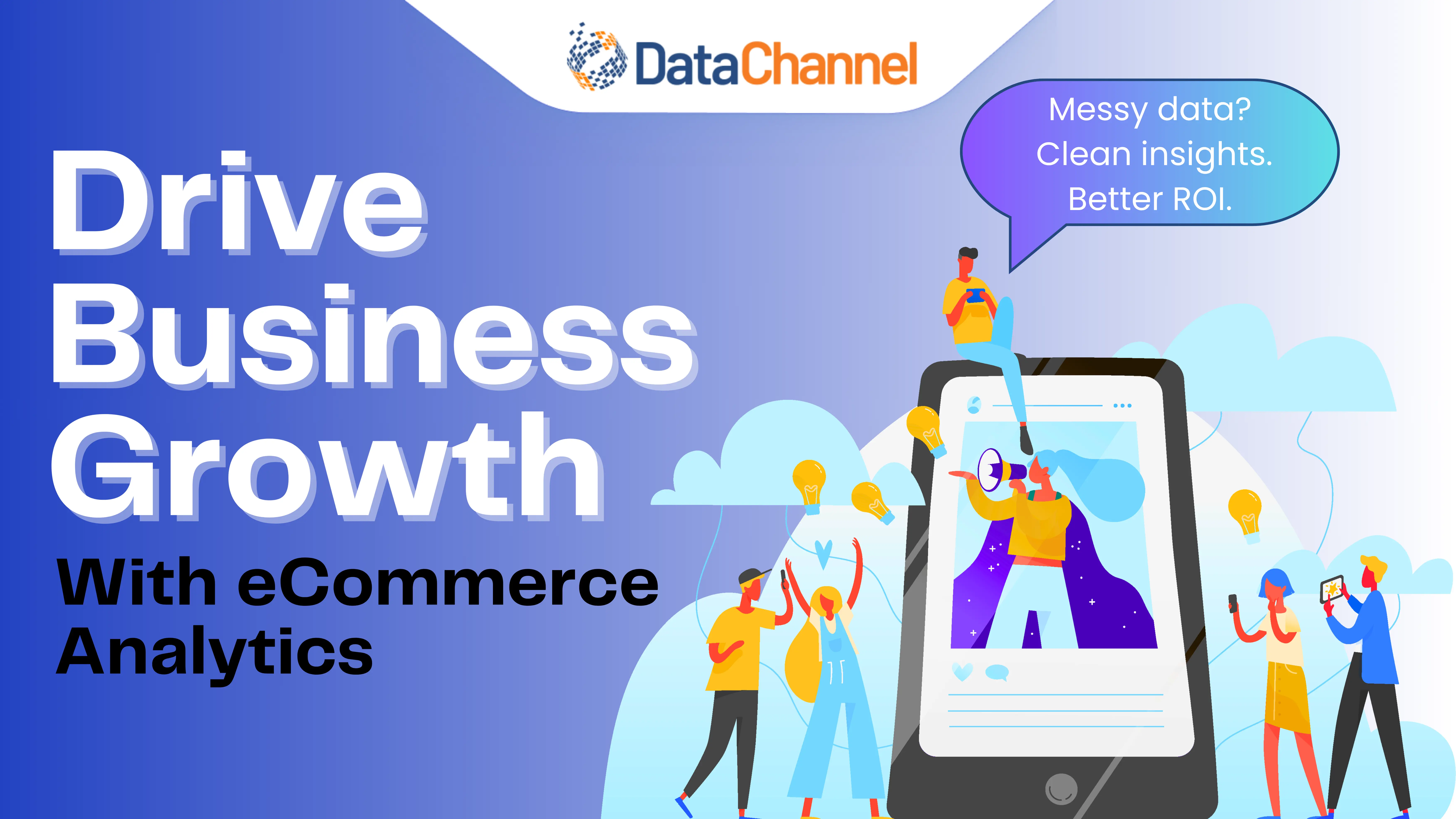
5 Crucial KPIs & Metrics For A Data-driven SaaS Marketer

“A good tool improves the way you work. A great tool improves the way you think” — Jeff Duntemann
Wait, but SaaS sells itself, Why do I need to read this very long blog?
The so-called “Self-selling” myth around SaaS products has been proliferated far and long by people like me & you on more than one occasion. The ease of deployment & usage, efficiency in process & use-case, and customer’s all-time favorite “try-before-you-buy” culture have further contributed to the consolidation of this myth over the years.
However, sooner rather than later, every marketeer realizes one bitter truth – SaaS doesn’t sell itself; Like any other conventional product or service, SaaS also requires a customer-centric & detail-intensive marketing strategy for capturing a sizable market share and sustain growth.
Plus, SaaS comes with an added pressure to retain customers for a much longer time, to ensure revenues on an extended timeframe, but we’ll talk about that later.
Hence, if you sleep uneasy at times for the sheer fear of how many people are clicking CANCEL SUBSCRIPTION at this very moment, please read ahead.
Game of KPIs !
Now that we have firmly established that your SaaS product would require a comprehensive marketing plan, let’s zero in on the method that can be used to do so — Establish, Calculate, Track, and Revise the Key Performance Indicators (KPIs).
KPIs have been friends with a SaaS marketer for a long time now. They help marketers set achievable goals, and increase accountability of the entire marketing process. They are a reliable measuring gauge to analyze the success and failure of the minutest actions executed in pursuit of driving growth in a SaaS organization.
However, in a world where new data is being created with every single click, scroll, and view, it becomes increasingly difficult to choose the right kind of KPI, which makes the best use of such vast amounts of data and help in producing actionable insights.
Researching and using the best-fit KPIs for your business is crucial to the success of any marketing strategies you aim to develop on the bedrock of these KPIs. Focusing on the wrong metrics might not only off-track you from your business goals, but also endanger the very sustainability of your business.
Now, before you start down the rabbit-hole of Best KPIs for your business or Most important KPIs for every SaaS marketer, have a look at these smartly curated 5 must-haves for every SaaS marketer.
.png)
Customer Acquisition Cost (CAC):
What is CAC? – Customer Acquisition Cost is simply put, the cost you spend on acquiring a new customer. What all is included in this “Cost” is the game-changer here. Usually, the most important factors being sales & marketing.
How to measure? – The method is detailed below. Let us assume that you spent around $100 in sales & marketing last month and managed to procure 10 new clients. The CAC would be $10.

Benefits of measuring CAC? – It is a direct window into the viability of your business when used in conjunction with CLV.
Return on Ad Spend (ROAS)
What is ROAS? – Return on Ad Spend is the measurement of how much revenue your business made against each dollar spent on advertising for the same.
How to measure? – The method is detailed below. Let us assume that you spent around $100 on the campaign and you managed to procure returns worth $10,000 from this campaign. The ROAS be 100.

Benefits of measuring ROAS? – Helps in measuring the efficacy of an Ad campaign. Since ad campaigns make a huge dent in the overall marketing budget, it is imperative that spendings must be directed towards more profitable ventures.
Conversion Rate
What is the Conversion Rate? – In an age of SaaS, no KPI can better predict a product’s real market appeal better than Conversion Rate. Simply put, it rates the real paying customers against the window-shoppers.
How to measure? – The method is detailed below. Let us assume that 100 visitors visit your SaaS product website in a given period, but only 2 orders are placed. Then the conversion rate is 2%.

Benefits of measuring Conversion Rate? – Conversion rate is nothing but the purchase rate, therefore a true measure of how much revenue would be coming from the sale of a SaaS product.
Churn Rate
What is Churn Rate? – Simply put, the churn rate reflects the customer retention rate in any given period. A higher churn rate is a numerical realization of an unhappy customer’s fast exit.
How to measure? – The method is detailed below. Let us assume that 10 clients left you this month, whereas you had 100 at the beginning of this month. Then the churn rate would be 10%.

Benefits of measuring Churn Rate? – More so than any other KPI, keeping a low churn rate is highly crucial for a SaaS company, as a SaaS firm’s profitability is directly proportional to the number of its long-time clients. A high churn rate demands a massive change in the product itself.
Customer lifetime value (CLTV):
What is CLTV? – It is the total of the revenue generated by a customer over their lifetime association with your SaaS product. This value is directly proportional to the stay duration of the customer.
How to measure? – The method is detailed below.

Benefits of measuring CLTV? – This KPI is crucial in deciding the long-haul marketing strategy of the company. It provides a long-term overview of the benefits associated with the customer’s engagement with the business.
Editor’s Note: Although powerful in theory, the above metrics & KPIs are only as good as the data they are based upon. In absence of reliable data and its handler tools, it will be a wasteful exercise.
One such tool is DataChannel, which enables effortless tracking, managing, and integrating data from multiple sources and helps you discover real-time insights without any code, scripts, or hassle.
How do I acquire, aggregate and analyze so much information?
“The more the merrier” – More the amount of data, the more it results in a marketer’s joy. More data leads to better analytics, insights & predictions, making those KPIs and metrics more meaningful and accurate. However, such huge amounts of data serve as a nightmare for its manager.
Locating, managing, tracking, transferring, cleaning, collating, integrating, and maintaining such huge amounts of data is a long and painful undertaking. Data integrity and security has to be maintained at each level. Data silos present a complete set of problems.
.png)
DataChannel helps in Business Growth?
DataChannel offers its users a comprehensive, cloud-native SaaS platform where data from 100+ varied sources can be integrated into a single warehouse (of user’s choice), at a frequency and granularity chosen by the user.
This seamless ETL (Extract, transform, & Load) process is enabled using dedicated and error-free data pipelines between the source and data warehouse, without any coding on the user’s end. The erroneous transfers are listed and tracked as well.
The power to have an integrated view of data from Sales, Advertising, CRM, Social Media, Databases, Files, etc in a single comprehensive data warehouse in real-time can lead to the generation of path-breaking insights on a user’s end. These can be viewed on DataChannel’s dashboard or any 3rd party dashboard for convenient reporting and presentation.
Gartner forecasts a worldwide growth of 6.3% in the public cloud services market. With an ever-evolving SaaS industry and new competitors entering the market every day, you would benefit by concentrating on your area of expertise and let DataChannel cater to your data-related needs.
The measuring of KPIs and metrics becomes a much effortless task when the data is readily available at a single place in real-time. Measuring & tracking these SaaS KPIs & metrics in real-time will empower you to drive growth in your favor.
“Carefully crafted & calculated KPIs can help you drive growth, and more so when backed by data aggregated using DataChannel! ”
Try DataChannel Free for 14 days










